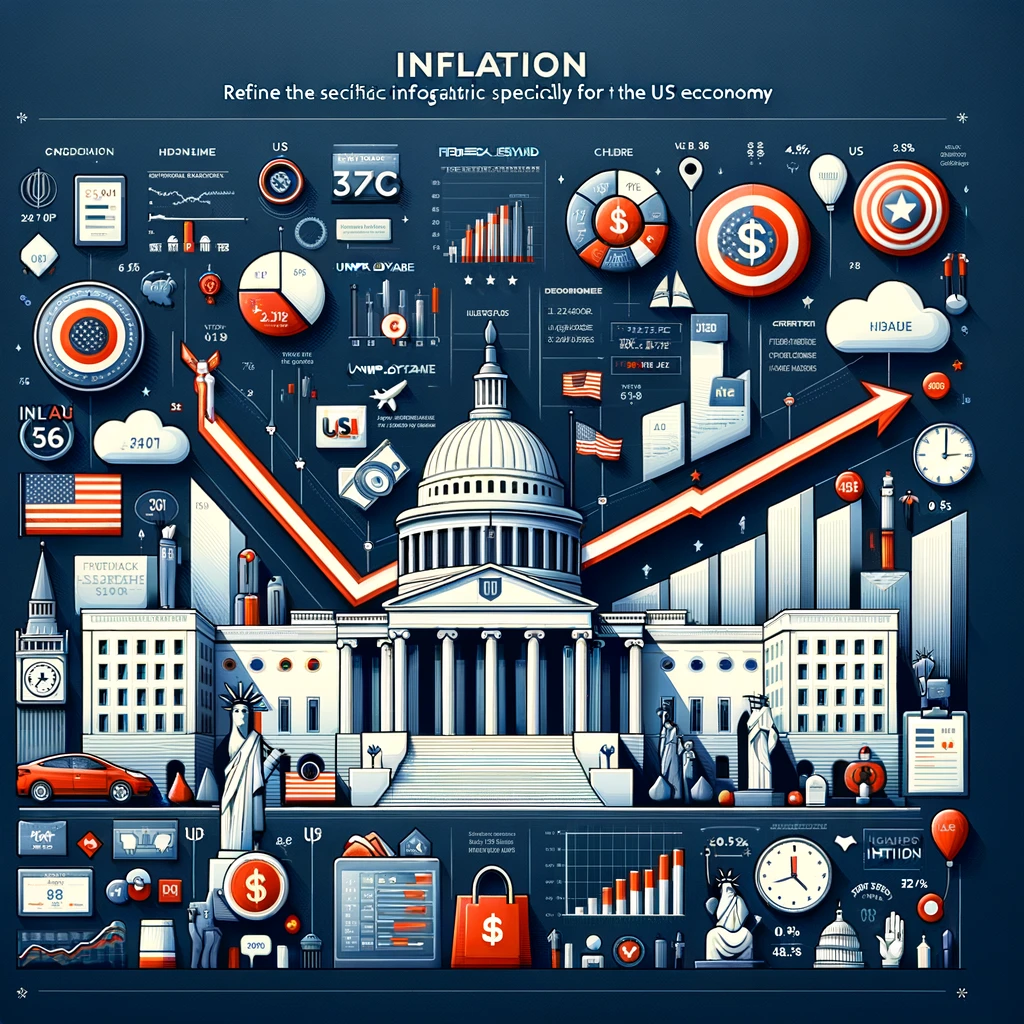Inflation Trends and Expectations: A Mixed Bag for the U.S. Economy
2023-12-04

Analysis of U.S. Consumer Price Index (CPI) Trends from November 2022 to October 2023
The latest monthly data on the Consumer Price Index (CPI) for All Urban Consumers All Items in U.S. City Average reveals some interesting trends. In November 2022, the year-over-year change in the CPI stood at a staggering 7.0%, reflecting the heightened inflationary pressures. However, in a notable deviation from this alarming upward trend, the CPI began to show signs of moderation in the following months. By June 2023, the year-over-year change had declined to 2.9%, marking a significant departure from the peak seen in November 2022. This dip in inflationary pressures continued into October 2023, where the year-over-year change settled at 3.2%. When comparing the recent data to the average year-over-year changes in the preceding years, some distinctive patterns emerge. In 2022, the CPI experienced a sharp increase, reaching 8.0% as the economy grappled with various supply chain disruptions and pandemic-related factors. However, 2023 has seen a reversion to a more moderate inflationary environment, with the average year-over-year change resting at 4.3%. It's crucial to note that this still represents an elevated level of inflation compared to the pre-pandemic years, such as 2018 and 2019, where the CPI registered much lower year-over-year changes of 2.4% and 1.8%, respectively. This recent data suggests a welcome deceleration in the inflation rate, indicating a potential easing of the pressures that have plagued the economy. However, it's important to remain cautious, as these trends may still fluctuate in response to various external factors. Nonetheless, the sustained moderation in the CPI's year-over-year change offers some respite and could signal a more stable inflation environment in the near future.
Significant Decline in Sticky Price CPI Indicates Potential Deflationary Trend in U.S. Economy
The Sticky Price Consumer Price Index, derived from goods and services within the CPI that seldom change prices, provides valuable insights into future inflation expectations. The latest data reveals a sharp decline in year-over-year change, plunging from 100.8% in November 2022 to -22.5% in October 2023. This drastic decrease deviates significantly from the previous trend, where the average year-over-year change was 15.8% in 2023, following a staggering 130.2% in 2022. The notable shift from rapid inflation to a substantial decrease could indicate a potential deflationary environment, albeit with the need for cautious interpretation due to the extraordinary nature of these changes. While deflation may initially seem favorable for consumers, it can also signal economic distress and decreased consumer spending. Therefore, it is essential to closely monitor these developments to assess their broader impact on the U.S. economy. The consecutive decrease in the Sticky Price Consumer Price Index from November 2022 to October 2023, culminating in a negative year-over-year change, is a marked departure from the preceding inflationary trend. It will be intriguing to observe how these fluctuations unfold in the coming months and their implications for U.S. inflation.
Fluctuating Inflation Expectations: A Look at Consumer Sentiment and Economic Implications
The University of Michigan's Surveys of Consumers provide insightful data on inflation expectations. The latest monthly data shows fluctuations in median expected price changes over the next 12 months. In Dec 2022, the inflation expectation stood at 4.4%, but it decreased to 3.6% in Mar 2023 before rising to 4.6% in Apr 2023. This was followed by a dip to 3.3% in Jun 2023, which then gradually increased to 4.5% in Nov 2023. These fluctuations indicate a degree of uncertainty and volatility in consumer expectations regarding future price changes. The general trend showcases a tendency towards moderate fluctuations rather than a consistent direction, reflecting the complexity of consumer sentiments and their assessment of future economic conditions. The variance in these expectations could potentially impact consumer spending and saving behaviors, as well as influence the decision-making processes of businesses and policymakers. Therefore, staying attuned to these changes in inflation expectations is crucial for understanding consumer sentiment and making informed economic decisions.
February 2024 Breakeven Inflation Rates Show Varied Market Expectations
The latest monthly data from the Federal Reserve Bank of St. Louis for February 2024 indicates the following breakeven inflation rates: - 5-Year: 2.35% - 10-Year: 2.3% - 30-Year: 2.4% These rates reflect the market's expectations for future inflation over different time horizons. The persistent disparities in breakeven inflation rates across various maturities suggest nuanced perceptions of inflation risk and economic growth over the medium to long term. It's crucial to monitor these rates closely as they offer insights into investors' inflation expectations, which can impact bond yields, investment strategies, and monetary policy decisions. Keep an eye on how these rates evolve to gauge shifting market sentiment and anticipate potential inflationary pressures.
Federal Reserve Bank of Cleveland's November 2023 Expected Inflation Rates
In the latest monthly data update for November 2023, the Federal Reserve Bank of Cleveland's expected inflation rates are as follows: 1-Year: 2.79%, 2-Year: 2.63%, 5-Year: 2.43%, and 10-Year: 2.38%. These figures are significant as they reflect the market's anticipation of future inflation, which plays a crucial role in shaping monetary policy and investment decisions. The 1-year expected inflation of 2.79% indicates a slightly higher short-term inflation expectation, while the 10-year expected inflation rate of 2.38% suggests a comparatively lower long-term anticipation. This dispersion in inflation expectations across different time horizons may signal nuanced perceptions about economic conditions and potential policy actions. Overall, these figures provide valuable insights for businesses and policymakers to gauge market sentiment and calibrate their strategies accordingly.
